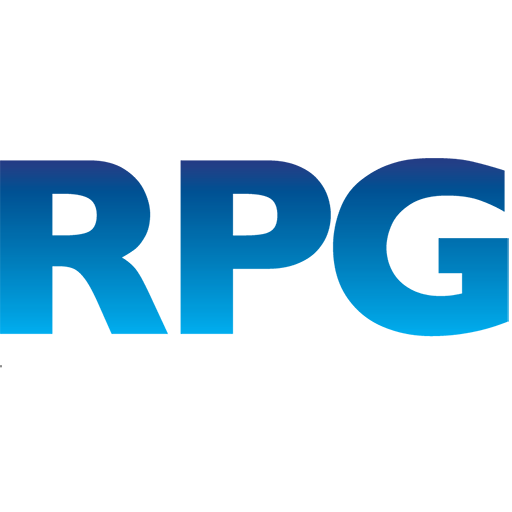So, you’ve determined it’s time to conduct some focus groups, the popular marketing research technique for bringing 6-12 participants into a room, asking them questions for a couple of hours, and then walking into a backroom where an audience is waiting to hear what the research concludes.

You may have observed focus groups live or via video feed, and you’ve almost certainly seen them portrayed on TV in some way (often humorously, but inaccurately), but now you’re thinking about conducting some yourself. After all, how hard could they be, right?
…
You’re probably waiting for us the drop the hammer here and tell you that no one but a seasoned professional should be conducting focus groups. And honestly, it’s good advice if you want to ensure your focus groups are conducted correctly. (Here’s a link to our approaches to traditional focus groups and online focus groups if you’re interested.)
But actually, no – you do not need to be a seasoned professional to conduct a focus group well. You do, however, need to know a few things to ensure that you conduct your focus groups appropriately so that you are able to get the most out of the exercise. So if you’ve ever wanted to be a focus group moderator (or you’ve been told by someone that you have to be), here are some tips and tricks to help you ensure you get the best possible data.
Five Ways To Make Your Focus Group a Success
Know your research objectives so that even if you deviate from your prepared questions, you don’t veer off track. Focus groups are conversational and can be quite freewheeling at times, particularly when the research design doesn’t effectively anticipate how individuals in the group will respond. That’s why it’s important to have a firm understanding of the objectives of the research so you can steer the conversation back to the topics that matter most.
Research objectives are sort of like the skeleton of the research itself, and while they’re used to design the study, they’re also useful for setting pacing during your discussion and for thinking about how you will report the results. The clearer the objectives are, the easier it is to synthesize the data you’ll be collecting. The better you know those objectives, the more effectively you’ll be able to ensure that your focus group discussions remain relevant to your informational needs.
During introductions at the start of a group, instead of going around in a circular pattern, select group members at random and ask them to speak. This practice will immediately communicate the norm for the group discussion that participants don’t need to wait their turn to speak, and it also establishes that the moderator will be calling on people to speak rather than expecting the participants to know when to speak up. (It also displays that the moderator is paying close attention to who has and has not spoken yet, prompting those who are more reserved to be prepared to speak up!)
While the group may evolve into a more natural conversation as things go on, this structure actually provides a safety net for the discussion to fall back on if things hit a dead end.
Use silence as a tool to get participants to speak. While “dead air” is something you should avoid if you’re on the radio or recording a podcast, it’s a vital social mechanism for keeping focus groups on track, because silence is uncomfortable for focus group participants and tends to get them to speak up. Many less-experienced moderators are overly conscious of how the participants and observers feel about long pauses and tend to jump in far too soon with follow-up questions or clarifications rather than allow a long silence to prompt a participant to speak. But allowing everyone in the room to feel the discomfort of not speaking can actually prompt several of the participants to be more vocal on future lines of questioning.
Frequent silence is also a good indicator that group engagement has dropped or that lines of questioning are difficult for participants to understand or uncomfortable for them to answer. There may be a need to re-establish some rapport or to break the questions down into smaller pieces to make them easier to answer. It may also be a good idea at that point to transition the group into another section or an exercise to help stimulate them and then return to the fruitless questions later on.

Use written exercises as a tool for anchoring participants to a point of view before they begin discussing it. One of the dynamics focus group moderators must be aware of is that once a question is asked, the views of everyone in the room will be shaped in some way by the first participant who speaks up, and anyone who follows the first speaker will do so in response to the discussion, not the question, and it may change what they would have said if they were the first speaker. But if you’re more interested in hearing what participants’ initial responses to a question might be and then discussing what they shared, a written exercise is a valuable tool. It can be as simple as providing each participant with a piece of paper and telling the group to write down their response to your question. You can then have each participant share what they wrote and respond to how it fits into the group discussion.
Another advantage of this technique is that you can collect the written responses, include them in any topline brief you prepare and then explain the discussion that went along with them. This provides your research audience with some initial data to consider and offers a nice starting point when it’s time to write a more comprehensive report or develop a full presentation later on.
Wait until the middle of your group to ask the toughest questions. Focus groups tend to follow a fairly typical pattern of group dynamics, and it’s not until the group has really grown comfortable with one another and reached a state of “performing” that you can really get participants to grapple with questions which are more abstract, mentally taxing or sensitive. The best cycle to follow is one of tension and release, where the questions start out easy, get a little harder, and then relax as you transition to the next section and begin again with easy questions before ramping up into anything more difficult. Each subsequent section should follow the same cycle, with the most difficult questions starting somewhere around halfway to two thirds of the way through the group.
Not only will this result in better data, but it will also ensure that your focus group session is more comfortable for everyone involved – including your observers, who will feel much better about the work you’re doing if the participants aren’t visibly uncomfortable with a sudden barrage of difficult questions!
Five Things to Avoid
Once the group has gotten started, don’t talk about yourself or how you feel about what is being said. Focus group moderators need to establish rapport early on in a focus group, but once that’s done, it’s time to shift into “question mode” and focus on letting your participants do the talking.
And if a participant asks you a question about what you know or think, flip it back on them and let them respond instead.
Don’t try to bring the group to a consensus. One of the biggest misnomers regarding focus groups is that they need to function like a meeting where all of the participants ultimately see eye-to-eye on a topic of interest. But nothing invalidates opinion research more quickly than making your research participants feel like they need to agree on things they don’t actually think or feel. Avoid this by encouraging different points of view and thanking participants who stand their ground for expressing themselves.
And if group dynamics appear to be causing everyone to agree with the strongest voices, use a projective exercise where you ask group participants to tell you what someone else close to them (their spouse, a coworker, their mother) might say instead.
Don’t let participants ramble on. Focus group participants are a part of your group because you asked them to share their opinion. But beware those who prattle on nervously or who can’t seem to stop contributing! Some participants are very good at articulating clear points of view, but many will chatter on as long as you let them, wasting valuable time and limiting others from being able to share. You can put a stop to this by simply saying, “thank you, Joe” and then letting the group know you need to move on. If they continue to talk, say “thank you” again and address a question to someone who isn’t speaking.
Don’t put words into participants’ mouths. A common problem in focus groups is for participants to struggle to articulate an idea they have, and it can be agonizing to listen to. But avoid the temptation to help them summarize or to restate for them what they just said, because this may introduce new ideas that are not theirs but which rather are your own based on your knowledge of the research objectives, and these can undermine the purpose of your study.
Instead, interrupt gently and either reframe the question a bit or ask the group to help:
- “John, I heard you say the word ‘frustrating’ in what you were saying there – can you elaborate on that?”
- “June, I can hear you’re having trouble putting this into words. What if I asked you this instead?”
- “I see Jane is struggling a little bit here. Can anyone help her complete this thought?”
- “Joe, it sounds like that’s on the tip of your tongue. Let me ask the group – what do you think Joe is trying to say? Joe, is that right?”
Using questions helps you to keep from unintentionally contributing your own voice to the group.

Don’t panic if you lose your place in your moderator’s guide. It is perfectly normal to get involved in the discussion and to forget what question is next. If you lose your place, take a moment to find it, and cover with a comment to relieve the tension:
- “Wow, this discussion is going so well, you’ve already answered several of the questions I was going to ask. Let’s see here… what I want to ask you next is…”
- “You guys are doing such a great job here that I lost my place! You answered this, you answered that… ah, here we go!”
- “Let me just look over my questions here and see if there’s something we haven’t addressed before we move on to the next section…”
These sorts of statements help to make you look like a seasoned professional who is concerned with the group discussion rather than the moderator’s guide and give you a chance to coolly cover glancing at the guide without harming the momentum of the group. Your participants will often use this downtime to take a sip of their drink or a bite of their refreshments, so don’t worry about their discomfort. As long as you continue to appear to be engaged by the group, your participants will respond with a similar level of excitement.
We hope this article has been helpful to you, and we want you to know that we’re here to be a resource however we can be on anything you’d like to know about marketing research!
Please feel free to check out our other articles, watch our Youtube Channel, connect with us on LinkedIn or Facebook or to contact us. We’d love to hear from you!

